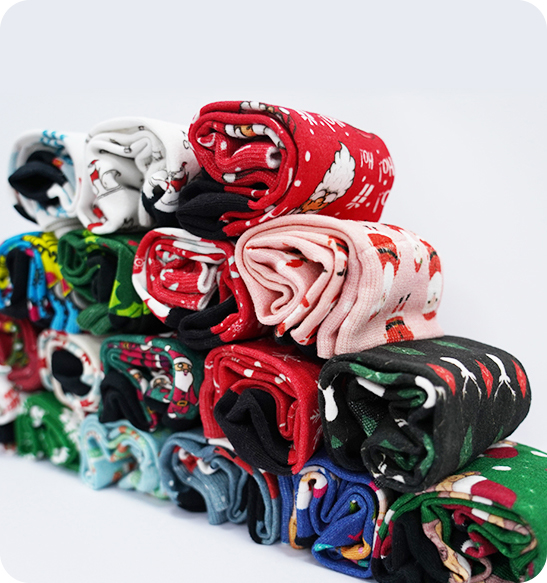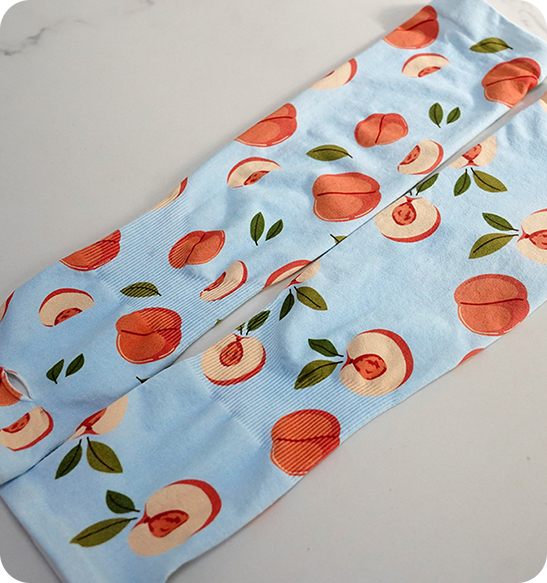
For socks, the thermal transfer process and the 3D digital printing process are two common customization processes, and they have their own advantages and disadvantages.
Thermal transfer printing process is a customized process that prints the designed pattern on the transfer paper, and then puts the transfer paper and socks together on the press machine to transfer the pattern to the surface of the socks. The production process is relatively simple. . However, since thermal transfer can only be printed on the front and back of the socks and cannot be transferred around the socks 360°, there will be obvious stitching lines on both sides of the socks, which affects the overall viewing effect of the socks, and transfer printing is required during the pressing process. The high temperature and the pressure of the pressing machine will cause the fibers of the socks to shrink more tightly, making the socks hard and affecting the breathability and comfort of the socks. In addition, because the ink of thermal transfer socks is only transferred to the surface of the socks and does not penetrate into the fibers of the socks, the color fastness of the thermal transfer process is not high. The socks will fade after being worn for a period of time. .


In terms of production cost and production time, although the thermal transfer process is easy to make and the production cost is low, thermal transfer has relatively single requirements for socks material. It can only transfer socks made of polyester, and there is no way to transfer socks made of other materials. ,in summary, the thermal transfer process can only be used to meet customers' large-volume polyester orders. In addition, each transfer requires manual placement of transfer paper and socks, which requires a lot of labor costs.
The 3D digital printing process uses a sock printer to print the pattern directly on the socks. If your design drawing is a loop diagram, the overall effect of the sock will be 360° seamless. In addition, 3D digital printing uses a socks printer to use the ink nozzle. When sprayed into the fibers of socks, the ink will be firmly adsorbed on the socks, ensuring the color fastness of the socks, preventing the socks from fading during long-term wearing, and will not cause damage to the material of the socks, while ensuring breathability. While maintaining the comfort of the socks,

In contrast, the 3D digital printing process has a diverse selection of sock materials. We can use corresponding pre-processing processes to print socks of polyester, cotton, nylon, bamboo fiber, and various materials to provide to customers. More sock material choices. For socks made of polyester, we only need to set the printing parameters and then use the sock printer to print the socks. After printing is completed, we only need to put the socks in the oven and use high temperature to let the ink develop color. For other materials For socks, we need to arrange for 2-3 technicians to handle the pre-processing and post-processing of the socks before they can be printed normally. That is to say, because these processes are added, the production cost and production time of the socks will be relatively increased.

The above are the advantages and disadvantages of the thermal transfer process and the digital printing process. For customers, the production cost of thermal transfer is lower, and it is more suitable for customers who have lower requirements for sock quality and material and mass production. The digital printing process is The cost is higher, but the socks have a wide range of material requirements and the quality is guaranteed. Customers can choose the printing process they need according to their own needs.
Product Display






Post time: Nov-02-2023
